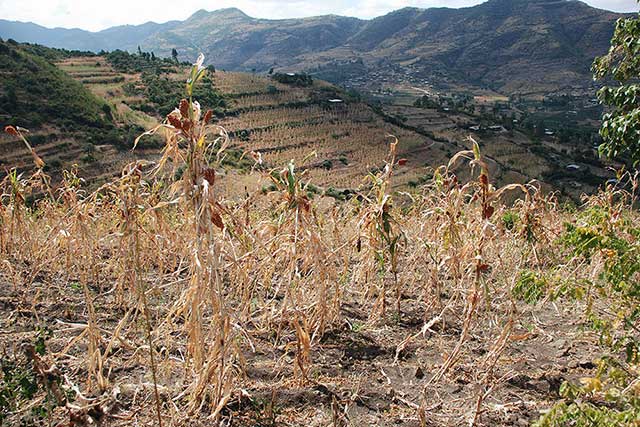Drought throughout East Africa has sharply curbed harvests and pushed the prices of cereals and other staple foods to unusually high levels, posing a heavy burden to households and special risks for pastoralists in the region, according to the latest Food Price Monitoring and Analysis Bulletin from the Food and Agriculture Organization of the United Nations (FAO).
Local prices of maize, sorghum and other cereals are near or at record levels in large areas of Ethiopia, Kenya, Somalia, South Sudan, Uganda and Tanzania.
“Rising food prices can have very diverse effects on households, depending on their net position towards food markets as well as on the distribution of households around the poverty threshold,” Boubaker Ben-Belhassen, Director of the Trade and Markets Division at the FAO, told The Source. “Sustained food price increases will generally have an impact on the rate of poverty and on food security. Although higher prices will favour net food producers, most of the poor are net buyers of food and, therefore, are adversely affected by the food price upswings.”
Inadequate rainfall in most areas of the sub-region has put enormous strain on livestock and their keepers. High cereal prices are hitting pastoral households particularly hard. In most drought‑affected areas, the lack of effective demand for livestock has led to rapid loss of value.
Sheep and goats now sell for about one-third of their normal prices, and cattle and camels fetch only half their normal market values. In addition, as pastoralists continue to reduce herd sizes in order to increase their ability to sustain the remaining animals, markets are saturated and terms of trade are precipitously deteriorating against them.
“When communities are hit by drought, FAO provides a range of support to help them quickly get back on their feet and start producing food,” added Ben-Belhassen. “Cash transfer mechanisms (like cash-for-work) are used to give the most vulnerable people a direct source of cash, while rehabilitating vital irrigation infrastructure, water reservoirs and feeder roads that will boost food production. In the longer term, FAO assists countries in building resilience to droughts and other climate related hazards to safeguarding development gains.”
Somalia’s maize and sorghum harvests are estimated to be 75 percent down from their usual level, and some 6.2 million people, more than half of the country’s total population, now face acute food insecurity, with the majority of those most affected living in rural areas.








